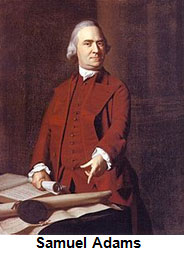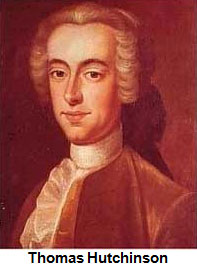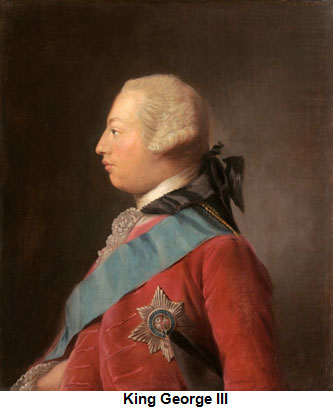
Source:
Samuel Adams, JS Copley,
Cobalty, Wikimedia Commons
Political issues were at the root of the American Revolution. These issues ranged from the colonists' protest of "no taxation without representation" to the English government's imposition of strict policies and laws against the colonists in an effort to maintain control of the territory. Although it was dangerous to speak out against the king, there were several brave American colonists who risked the possibility of imprisonment or even being put to death.
As the possibility of war increased, American colonists found themselves split on the issue of whether to become an independent country or to stay loyal to the mother country. Eventually, the colonists split into two groups, the patriots and the loyalists.
Patriots |
Loyalists |
| Americans who wanted to be free of English rule Many patriots were soldiers who were part of the Continental Army. Patriots were also referred to as rebels. |
Americans who remained loyal to the existing English government and supported the king Loyalists were also called Tories. |

Source:
Samuel Adams, JS Copley,
Cobalty, Wikimedia Commons
was a political leader and famous patriot who played an active role in the American Revolution. He opposed the Stamp Act and led a riot against it. He played a vital role in the Boston Tea Party. Adams served as a representative of Massachusetts in the Continental Congress.

Source:
Thomas Hutchinson, Wikimedia
Thomas Hutchinson was the Royal Governor of Massachusetts. Hutchinson was a prominent loyalist who favored the taxes imposed by the English. As a result of his political views, Hutchison's mansion in Boston was vandalized in 1765.
![]() In this activity, you will read the following quotes and determine if each is something that a patriot or loyalist might say. Select the best answer.
In this activity, you will read the following quotes and determine if each is something that a patriot or loyalist might say. Select the best answer.
At the beginning of the Revolutionary War, American colonists were in the process of declaring their independence from England in response to years of English government policies that denied those who lived in the colonies individual freedom and imposed unfair taxes upon them. England was led by (pictured below) who ruled England from 1760 to 1820. King George levied taxes against the colonists to help pay for the debt that England incurred as a result of the French and Indian War. This act made him very unpopular with the colonists. He imposed the Stamp Act, the Sugar Act, and later, the Intolerable Acts.

Source: George III by Allan Ramsay, Wikimedia
The drafters of the Declaration of Independence specifically outlined the colonists' grievances against King George. Once independence was declared, King George sent his troops to protect his country's interests.
![]() Click on the "next" button to advance the slideshow and read about the political leaders of the American Revolution.
Click on the "next" button to advance the slideshow and read about the political leaders of the American Revolution.
Sources of images used for this section as they appear, top to bottom: